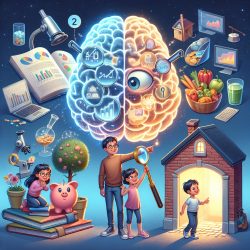Key Findings from the Research
The research underscores the importance of a multi-source information gathering approach. Children may not always provide comprehensive details about their symptoms, and parents or teachers can offer crucial supplementary information. A thorough history-taking process helps in accurate diagnosis and effective intervention planning.
Implementing Effective Psychotherapeutic Techniques
Several psychotherapeutic techniques have been identified as effective for treating child and adolescent psychiatric disorders:
- Cognitive Behavioral Therapy (CBT): Effective for anxiety, depression, and obsessive-compulsive disorders.
- Play Therapy: Particularly useful for younger children who may not be able to articulate their feelings verbally.
- Family Therapy: Involves the entire family in the therapeutic process, addressing family dynamics that may contribute to the child's issues.
- Interpersonal Therapy (IPT): Focuses on improving interpersonal relationships to alleviate symptoms of depression.
Challenges and Solutions in Child Psychotherapy
Practitioners often face challenges such as the "silent" child, where anxiety or other underlying issues may prevent the child from speaking. In such cases, the clinician should use non-verbal methods like drawing or play to engage the child. Establishing rapport is crucial, and it should be done in a way that respects the child's autonomy while ensuring their best interests are met.
Encouraging Further Research
While the guidelines provided in the research are comprehensive, they are not exhaustive. Practitioners are encouraged to engage in further research and adapt their methods based on the specific needs of each child. Continuous learning and adaptation are key to effective psychotherapeutic practice.
Conclusion
Implementing the principles outlined in the research can significantly improve the effectiveness of psychotherapeutic interventions for children and adolescents. Practitioners should remain flexible and open to new methods, always prioritizing the unique needs of their young clients.
To read the original research paper, please follow this link: General Principles for Psychotherapeutic Interventions in Children and Adolescents.










